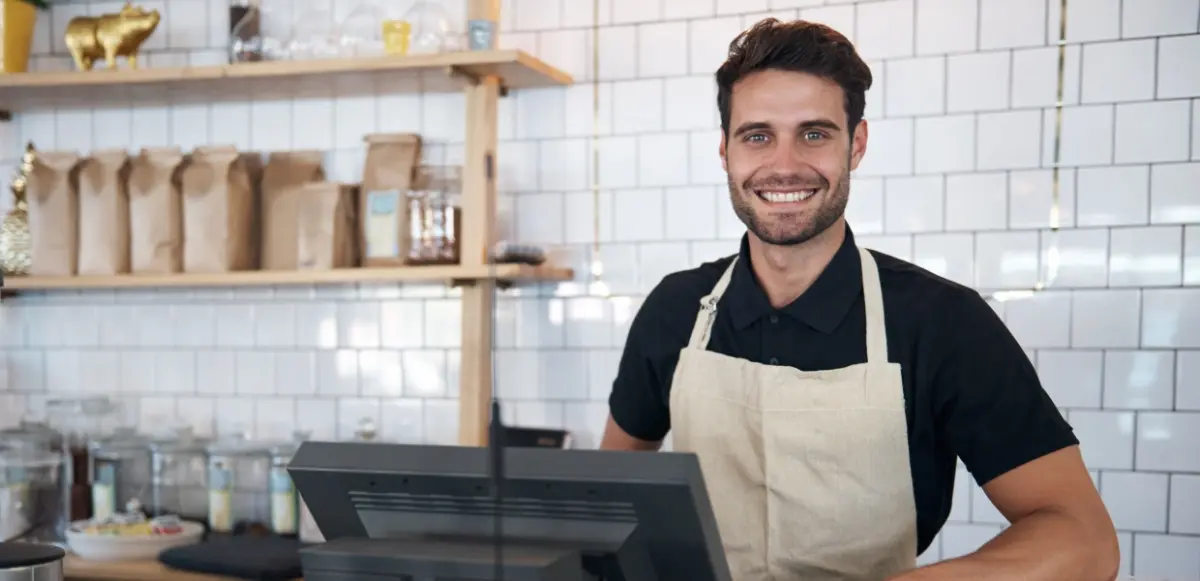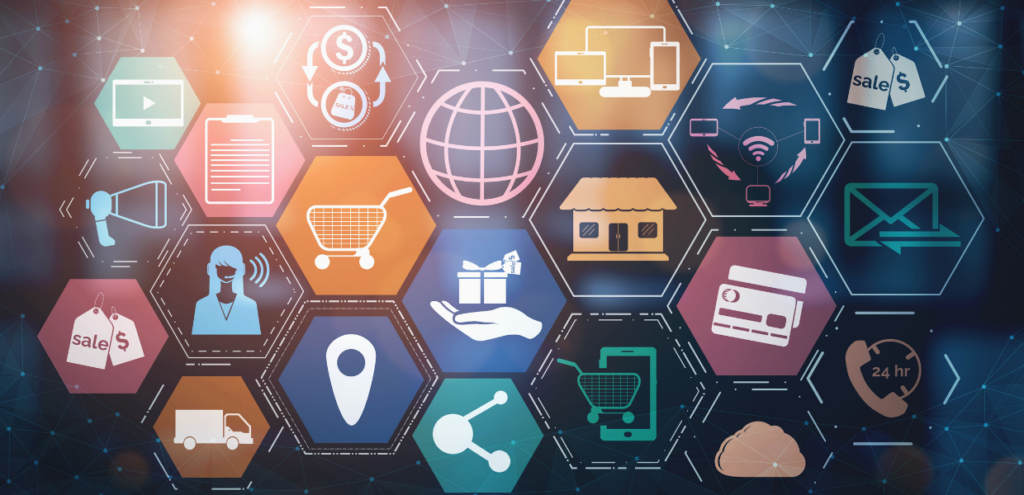All Articles
Revolutionizing Restaurant Operations: The Comprehensive Guide to Restaurant Management Software

Restaurant management software (RMS) is an essential tool that has revolutionized restaurant operations. It encompasses a suite of applications designed to streamline and automate various operational tasks within a restaurant. By integrating multiple functionalities into a single platform, RMS enables restaurant owners and managers to oversee their operations more efficiently.
RMS typically has primary functions such as order processing, table management, inventory tracking, staff management, and customer relationship management. By centralizing these processes, RMS helps improve productivity, enhance customers’ overall dining experience, and ultimately drive profitability.
The Evolution of Restaurant Management Software
Historically, restaurant management relied on manual processes and paper-based systems. Orders were handwritten, inventory was tracked using spreadsheets, and customer interactions were often inconsistent. While this approach worked for small operations, it was prone to errors, inefficiencies, and miscommunication between front-of-house and kitchen staff. As the restaurant industry expanded and customer expectations grew, these limitations became increasingly challenging.
The introduction of technology into the restaurant industry marked a turning point. Early innovations, such as electronic cash registers in the 1970s, began automating basic tasks such as order recording and payment processing. By the 1980s and 1990s, personal computer-based POS systems emerged, offering restaurants greater control over sales tracking, inventory management, and reporting. These systems laid the foundation for more integrated solutions by combining multiple functions into one platform.
The rise of cloud-based software in the 2000s marked a significant leap forward. Cloud technology allowed restaurant owners to access real-time data from anywhere, enabling better decision-making and operational flexibility. Features like online ordering, mobile apps, and integration with third-party services such as delivery platforms became essential as consumer behavior shifted toward convenience and digital engagement.
Today, restaurant management software has evolved into all-in-one platforms that streamline every aspect of operations—from taking orders to managing inventory and analyzing performance. With advancements like mobile compatibility, AI-driven insights, and contactless solutions such as QR code ordering, modern RMS continues to adapt to the changing needs of both restaurants and their customers. This evolution underscores its importance as a tool for efficiency, profitability, and customer satisfaction in an increasingly competitive market.
Why Use Restaurant Management Software
Implementing a restaurant management system can significantly benefit restaurant operations in several ways:
- Efficiency: RMS’s most significant advantage is its ability to automate routine tasks. This automation reduces the time staff spend on manual processes, allowing them to focus more on customer service and enhancing the dining experience.
- Cost Control: RMS provides tools for tracking food costs and managing inventory effectively. Restaurants can improve profitability by monitoring stock levels and minimizing waste. For instance, real-time inventory tracking helps prevent over-ordering or stockouts.
- Data-Driven Insights: RMS collects and analyzes data from various restaurant operations. This data can provide valuable insights that inform decision-making regarding menu adjustments, staffing needs, and marketing strategies. For example, analyzing sales data can reveal which menu items are most popular or which times of day see the most traffic.
- Enhanced Customer Experience: By streamlining order processing and improving communication between front-of-house and kitchen staff, RMS can lead to faster service and higher customer satisfaction. Features such as online ordering and table booking contribute to a smoother dining experience.
- Scalability: As restaurants grow or expand their services (e.g., adding delivery or catering), RMS can easily scale to accommodate these changes. This adaptability is crucial for long-term success in a competitive industry.
What Comprises Good Restaurant Management Software

A robust restaurant management software should include several key features that cater to the unique needs of the restaurant industry. Here are the essential components that define effective RMS:
Point of Sale (POS) System
The POS system is the heart of restaurant management software. It efficiently facilitates order processing and payment transactions. A modern POS system integrates with other functionalities, such as inventory management, to provide real-time data on sales and stock levels.
- Order Processing: Staff can quickly enter orders into the system, reducing customer wait times.
- Payment Processing: POS systems support various payment methods, including credit cards, mobile payments, and gift cards.
- Sales Reporting: Managers can access detailed sales reports that help track performance over time.
Table Booking
Table booking features allow customers to reserve tables online or through an app. This capability helps restaurants manage seating capacity effectively and reduce wait times for guests.
- Reservation Management: Staff can view reservations in real time, allowing them to plan seating arrangements accordingly.
- Customer Preferences: The system can store customer preferences for future visits, enhancing personalized service.
Online Ordering
With the rise of delivery services and changing consumer preferences, an integrated online ordering system is crucial for modern restaurants. This feature lets customers order directly from the restaurant’s website or app.
- User-Friendly Interface: A well-designed online ordering system makes it easy for customers to browse the menu and place orders.
- Order Customization: The online platform allows customers to easily customize their orders (e.g., selecting toppings or sides).
Self-Ordering Kiosk
Self-ordering kiosks allow customers to place their orders independently at the restaurant. This speeds up the ordering process and reduces labor costs by minimizing the need for front-of-house staff during busy periods.
- Interactive Displays: Kiosks often feature touch screens that guide customers through ordering.
- Upselling Opportunities: The system can suggest additional items based on customer selections.
QR Table Ordering
QR table ordering has gained popularity as a contactless solution in dining establishments. Customers can access the menu and place orders directly from their smartphones by scanning QR codes at their tables.
- Convenience: Customers appreciate being able to order without waiting for a server.
- Reduced Contact: This feature minimizes physical interaction between staff and guests, which is especially important in health-conscious environments.
Inventory Management
A comprehensive inventory management system tracks stock levels in real time, alerts managers when supplies are low and helps optimize ordering processes to reduce waste.
- Real-Time Tracking: Managers can monitor inventory levels at any time, ensuring they have sufficient stock on hand.
- Supplier Integration: Some systems allow direct ordering from suppliers when stock levels drop below a certain threshold.
Kitchen Display System (KDS)
A Kitchen Display System replaces traditional paper tickets in the kitchen by displaying orders on screens. This technology improves order accuracy and kitchen efficiency by providing real-time updates on order status.
- Order Prioritization: The KDS allows kitchen staff to prioritize orders based on preparation times.
- Communication Tool: It serves as a communication bridge between front-of-house staff taking orders and kitchen staff preparing them.
Delivery Software
Integrated delivery software manages all aspects of food delivery—from tracking orders to optimizing delivery routes—ensuring timely customer service.
- Order Tracking: Customers can track their orders through an app or website.
- Route Optimization: Delivery software calculates the most efficient routes for drivers, reducing delivery times.
Employee Scheduling
Effective employee scheduling is critical for managing labor costs while ensuring adequate staffing during peak hours. A good RMS includes tools for scheduling shifts based on employee availability and business needs.
- Shift Management: Managers can create schedules easily while considering employee preferences.
- Time Tracking: The system tracks employee hours worked for accurate payroll processing.
Customer Relationship Management (CRM)
A built-in CRM module helps restaurants effectively manage customer interactions. This feature allows businesses to track customer preferences, feedback, and loyalty programs.
- Loyalty Programs: Restaurants can implement loyalty programs that reward repeat customers with discounts or special offers.
- Feedback Collection: CRM can facilitate customer feedback collection through surveys or direct communication channels.
Marketing Tools
Effective restaurant management software should also include marketing tools such as email marketing, loyalty programs, coupons, loyalty cards, and others. These tools enable restaurants to engage with customers directly, promote special offers, and reward repeat business. For instance:
- Email Marketing: Platforms like Mailchimp allow restaurants to automate email campaigns targeting specific customer segments based on their past visits and preferences.
- Loyalty Programs: Implementing loyalty points systems or cards encourages repeat visits by rewarding customers for their patronage with discounts or free items.
- Coupons: Digital coupon distribution can attract new customers and incentivize existing ones to return.
Reporting and Analytics
Comprehensive reporting tools are essential for data-driven decision-making. A good RMS provides detailed analytics on sales performance, labor costs, inventory usage, and customer behavior.
- Customizable Reports: Managers can generate reports tailored to specific metrics they want to analyze.
- Performance Tracking: Regular reporting helps identify trends that inform strategic planning over time.
Conclusion
An effective restaurant management software solution is crucial for success in today’s competitive restaurant landscape. By incorporating essential features such as POS systems, table booking capabilities, online ordering options, self-ordering kiosks, QR table ordering functionality, inventory management tools, kitchen display systems (KDS), delivery software solutions, employee scheduling capabilities, CRM modules, and robust reporting tools into a cohesive platform, restaurants can significantly enhance operational efficiency.
These features streamline processes and contribute to improved customer satisfaction by providing faster service and personalized experiences. As technology continues to evolve within the hospitality industry, investing in a comprehensive RMS will enable restaurants to adapt quickly to changing consumer demands while driving growth in an increasingly digital world.
For those considering implementing or upgrading their restaurant management software solutions, evaluating how each feature aligns with their operational needs and long-term business goals is essential. With the right tools, your restaurant will be well-equipped to thrive in today’s dynamic environment while delivering exceptional dining experiences that keep customers coming back for more.
Ready to elevate your restaurant’s operations and enhance customer satisfaction? Discover how TapTasty‘s comprehensive restaurant management software can transform your business today! Contact us for a free demo and see firsthand how our innovative solutions can streamline your processes and drive profitability. Don’t miss out on the opportunity to take your restaurant to the next level—get in touch with us now!
 29 January 2025
29 January 2025 6 min read
6 min read

